Growing currants in South Africa
Currant plants are mostly grown in the northern hemisphere, but also grows well at higher altitudes and cooler parts of SA. It can tolerate heavy frosts and winter temperatures of around -35’C.
Currant plants are mostly grown in the northern hemisphere, but also grows well at higher altitudes and cooler parts of SA. It can tolerate heavy frosts and winter temperatures of around -35’C.
Currant (Ribes) is a thorn less shrub that grows well in cooler parts of the country. Currant bushes can grow up to 1.8m wide and tall. All currants have attractive flowers and maple like leaves that make them desirable in the edible landscape. It is a perennial crop that can tolerate moist areas.
Currants come in multiple species under the genus Ribes. They are sweet and sour flavourful fruits and mainly come in the following varieties (typically classified by their colours). Black, Red, Pink and White currants. The European Black Currant (Ribes Nigrum) has a strong and unusual flavour which bears a pendulous chain of small to medium size berries. Each currant berry has a size of about 1 cm in diameter, almost black with a glossy skin and a persistent calyx at its apex. It can carry about 3-10 tiny, edible seeds.
The Red, Pink and White currants are the same species (Ribes Sativum). The Pink and White currants are generally sweeter.
Black currants (Ribes nigrum) are known for their strong flavour that makes them perfect for syrups, jellies and similar food products rather than eating fresh.
These are typically used for making juices, jellies, purees and more.
These have 3 species, R. rubrum, R. petraenum and R. vulgare and typically have lower acid content than other varieties, so they are good to eat fresh.
Ribes vulgare or pink currant is an intermediate between white and red currants. It has colourless skin and pink flesh.
Berries of red, white and pink currants feature translucent pulp, sweeter in taste. They, however, consider inferior to blackcurrants regarding antioxidant power.
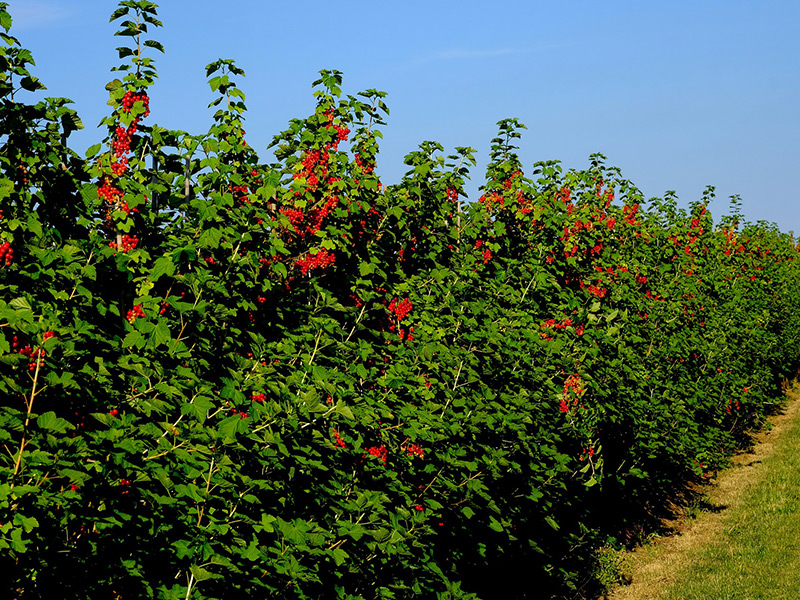
Apart from eating fresh, currants make excellent juices, syrups and preserves. They can also be used to make cordials, wine, craft beers and other processed products such as freeze dried powders.
As previously mentioned, currants come in red, pink, white and black. Reds and pinks are used primarily in jams and jellies because they are quite tart. Whites are the sweetest and can be eaten fresh. Dried currants are becoming increasingly popular as a snack. Some currant shrubs are attractive enough to plant in a shrub or flower border. Frozen currants can be added to drinks such as iced tea, lemonade or cocktails.
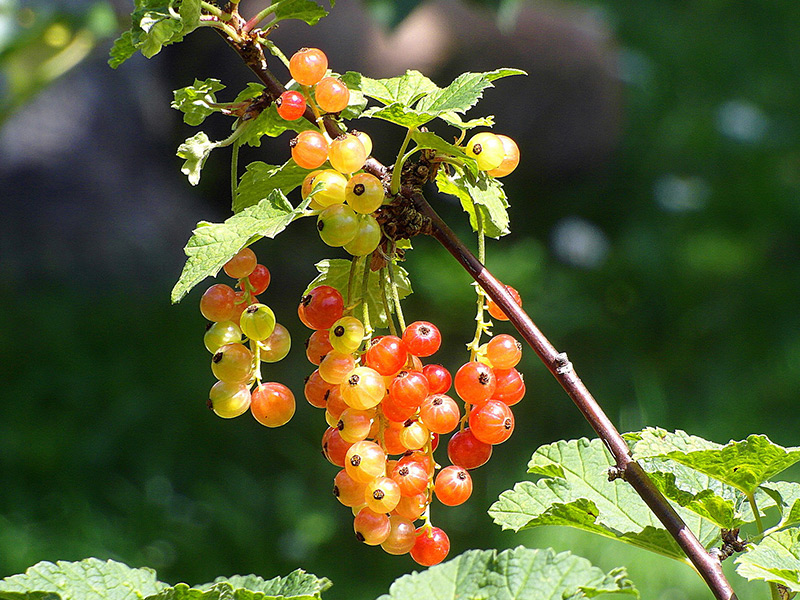
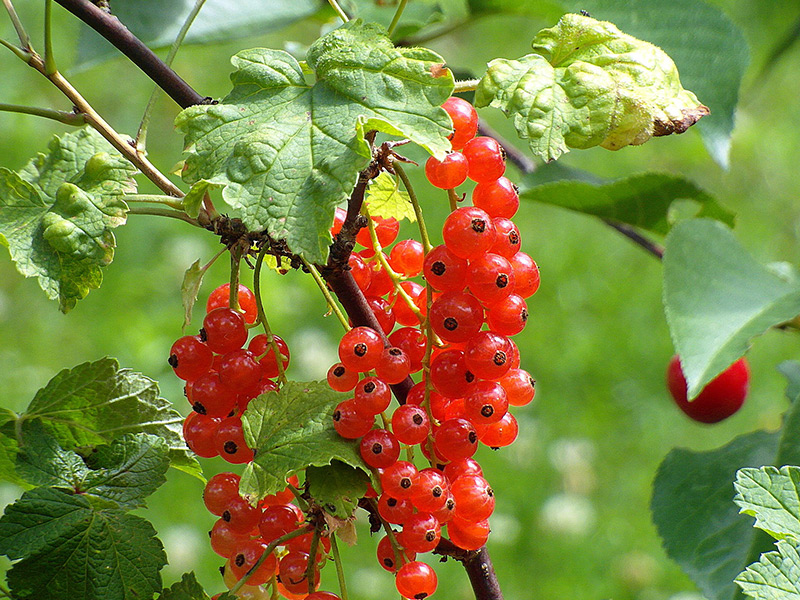
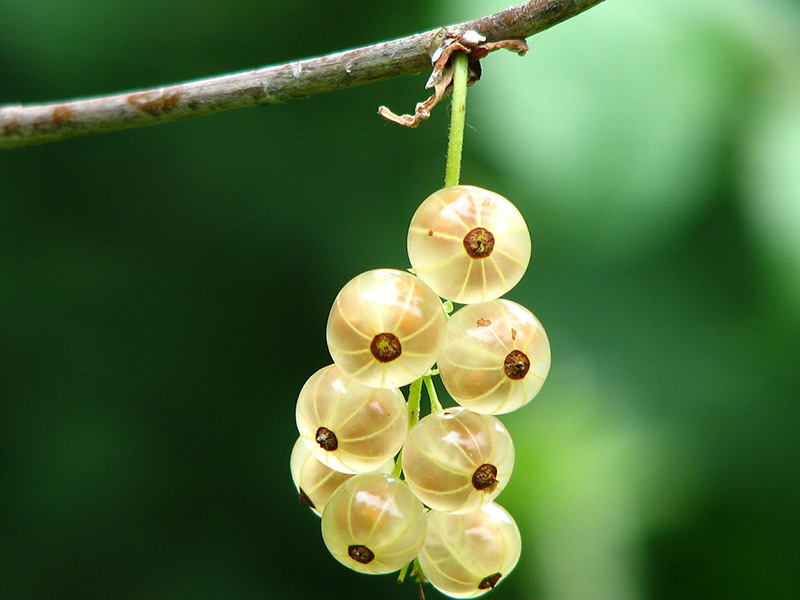
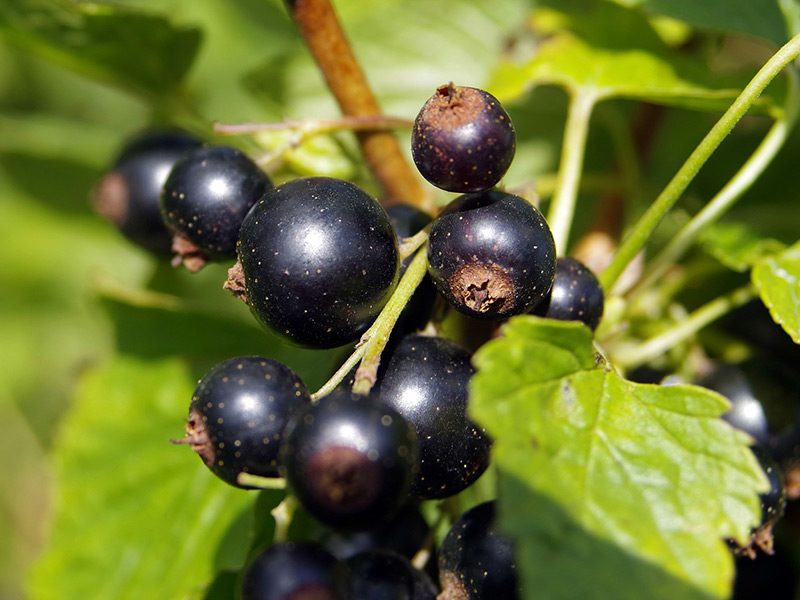
It prefers a soil ph level between 5.5 to 7.0
Currant plants are self-fertile so cross pollination is not required for fruit development.
A good quality of blackcurrant is that it can withstand poor drainage more than other similarly soft fruits like it; however, for optimum growth, it should be planted in well-drained soil where there should be ample organic matter added and also there should be protection from very strong winds in areas such as in some Eastern Cape and Western Cape areas. A natural windbreak can be made by planting elderberry plants 1.5m apart in a row on wind facing borders. The elderberry plant can grow 2m high in one year and can reach up to 6m high in some soils which will not only provide an abundance of elderberries and a natural habitat for birds but also a good wind shield for a more wind sensitive currant orchard.
Currants grow well in sun or partial shade, and appreciate afternoon shade in very warm climates.
A mixture of 5% to 10% well-aged manures can be mixed in with compost and the soil that were dug out of the planting whole and placed back in the hole where the plant can be planted in. In the end, amply water the planting hole as even soaking will help firm the soil around the roots of the plant.
Plant currant plants 1.5m apart in the rows and 2.2m to 2.5m between the rows.
There is a slight difference even in planting red and white currants from that of blackcurrants. While the blackcurrant is planted 5cm deeper than it was originally in the nursery, red, pink and white currants are planted at the same level. The reason for this difference is that in case of blackcurrant plant, it is desired to have more shoots emerging from the base of the plant whereas in case of red, pink and white currant plants, it is best to have a single stem having an open shape of bush on top.
Water thoroughly after planting and apply 5cm to 10cm of organic mulch around the plants. Mulch helps keep the soil moist and cool and prevents competition from weeds. Add additional mulch every year to bring it up to the proper depth.
Red, pink and white currants can be grown even as single (0.5m spacing), double (1.0m spacing) or triple (1.3m spacing) in a cordon configuration. This is the most common method as it is also the simplest method and which provides the highest yields.
Red, pink and white currants are less tolerant to shade and water logging and hence should be planted in full sun in a well-drained ground. These will also require protection from heavy frost in the very cold parts of the country for example such as some parts in the Northern Cape or Eastern Free State in South Africa. Plants can be protected with fleece cloth.
From 1942 onward, blackcurrant syrup was distributed free of charge to children under the age of two. This may have given rise to the lasting popularity of blackcurrant as a flavoring in Britain.
Results from a soil test are the most accurate guide to fertilizer and lime requirements. It is important to determine soil fertility and pH levels before planting, so that necessary agricultural lime and fertilizer can be applied to the soil.
Fertilization greatly depends on many factors such as soil fertility, soil structure, composition and climate so it is advisable to have the soil tested before starting with a production system. Adding organic matter to soils will improve the soil’s fertility, help reduce soil compaction of clay soil, improves aeration and assist with the moisture holding capacity.
Organic materials such as compost and/or well-aged manures can be worked into the soil in late winter before planting.
A little more fertilizer is needed for black currants than red, pink and white currants. Fertilizers should be added while preparing the soil for planting the young plants and also for established plants, during late winter.
Depending on the soil type, acidity, drainage and amount of rainfall, one has to add compost/humus, aged manure and a balanced NPK fertilizer, preferably with gradual release of nutrients.
Excessive doses of nitrogen can promote strong growth of plants, but the plants are weak and prone to physical damage and diseases. Fertilizers with potassium chloride (or other chlorides) should be avoided as it would be harmful to the biological life of the soil which is an essential part required to grow healthy and good yielding plants.
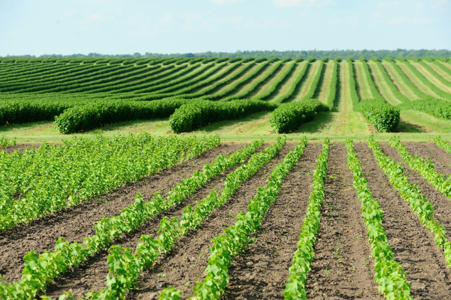
They need watering for maximum fruit production. Once the plants are established water them as needed usually once or twice per week when dry. Recent annual rainfall amounts need to be taken into account before planting. Currants require approximately 20mm of rainfall per week during the growing season. Drip irrigation is best as it not only maximises water usage but also provides water directly to the roots instead of on the canopy of the plants which can cause fungi and disease problems.
Pruning currant bushes is necessary to promote growth, train the branches, facilitate harvesting, remove any diseased material and most of all, to keep the plant’s interior open for optimum sunlight penetration which will lead to optimum yields. Currant pruning is a quick annual process and part of the regular maintenance program. It is important to note that the pruning style of blackcurrants differs from the red, pink and white currants.
Below are some basic tips for pruning currants. Detailed instructions with illustrations on pruning follow below this section.
Insect pests are a minor concern for home growers of currants. Infestations are uncommon and rarely cause major damage. Possible insect pests include aphids, cane borers, spider mites, fruit worm, fruit flies, coleoptera (beetle families) and birds. Careful site selection and good cultural practices such as mulching, pruning and sanitation will minimize pest problems.
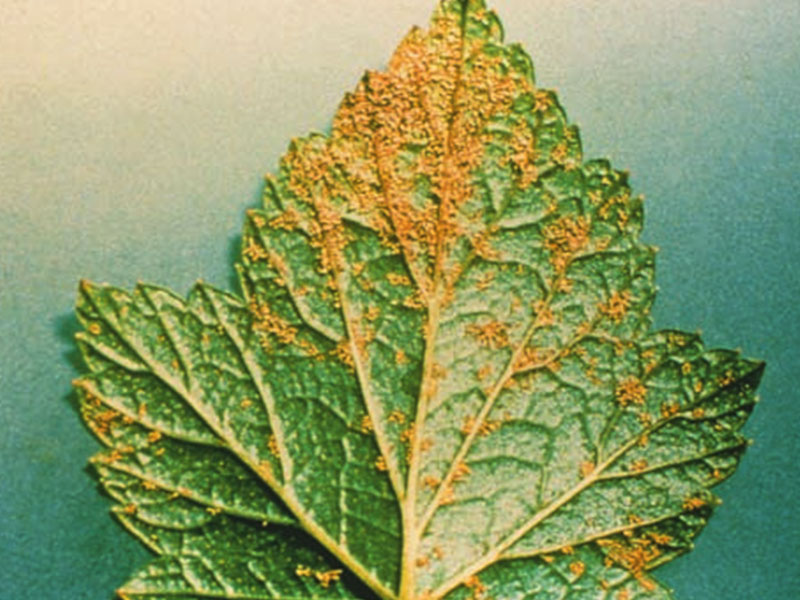
Currant Rust: This is a fungus that occurs in summer in the form of yellow spots turning red-orange. These are actually the fungal spores. Plant is weakened due to this disease and leaf malformation takes place. Apply a registered fungicide such as BASF Bellis (containing Boscalid and Paraclostrobin) which is registered in SA to be used on most berry crops including currants. Apply as soon as initial symptoms are seen. An example can be seen in the image below.
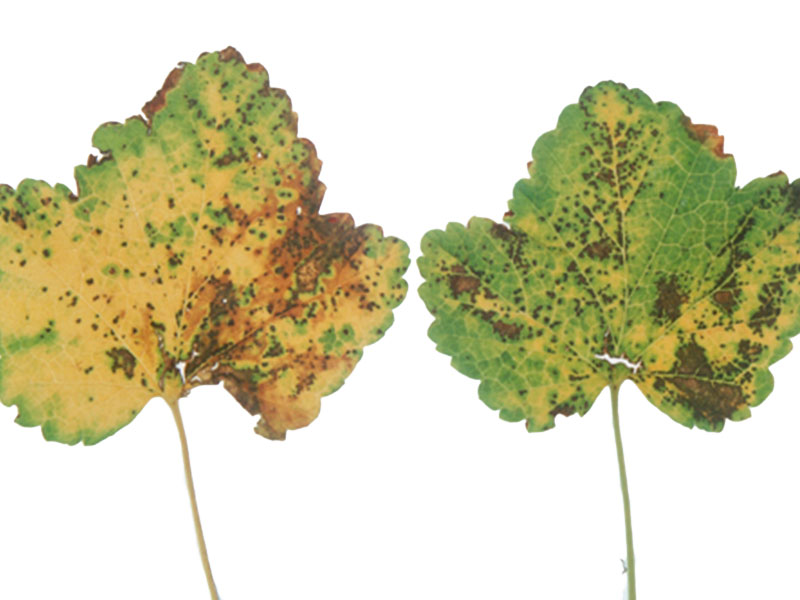
Currant Anthracnose: Brown spots appear on leaves in this disease. They spread fast and cover entire plant upon which leaves fall and plant dies. It occurs usually in hot and dry weather. A suitable registered fungicide such as BASF Bellis should be used immediately. An example can be seen in the image below.
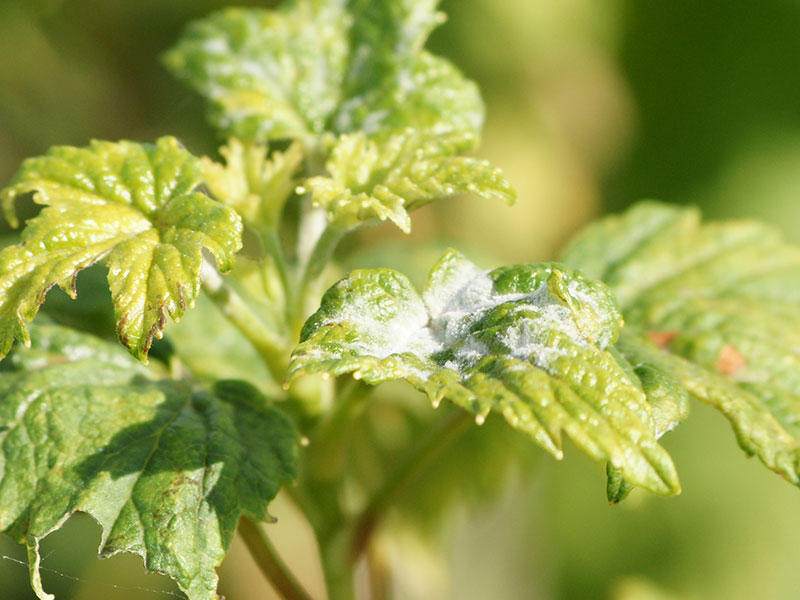
Powdery Mildew: As the name suggests it takes place in the form of a powdery patina on leaves and is actually a fungus and can be a problem in some locations. It causes deformation of buds, twisting of leaves and elimination of flowering. Because of this, the plant is weakened and ultimately dies. To avoid this disease, spray plants with a registered fungicide such as BASF Bellis. Try to avoid overhead watering. Also affected parts should be cut and disposed of so as to avoid spread of the disease to healthy plants. Prevention is the best measure for controlling powdery mildew. Site plants where they will receive good air circulation and plenty of sunlight as this will reduce spore germination. Regular pruning improves air circulation. Remove any dead plant debris from the vicinity of currant shrubs as this material can harbour fungal spores. Remove affected plant parts at the first sign of powdery mildew to prevent spread to the rest of the plant. Dispose of plant debris in a hot compost pile or in the trash.
Plant life span: 12 years+
Years to start fruiting: 2-3 years
Years to mature plants: 4-5 years
There is no simpler way to tell when currants are ripe than to monitor the color and flavor of the fruits as they develop.
Pick blackcurrants only when they are properly ripe which is approximately one to two weeks after they turn black. The currants at the top of each cluster generally ripen first. Pick red and white currants as soon as they are ripe. Simply cut off the entire cluster with scissors.
All types of currants freeze well.
When using the fruit for jam, you should harvest it before it is fully ripe so that natural fruit pectin levels will be higher.
Currants have a shelve life of 10 to 14 days if stored between 2˚C and 6˚C
Yields between 5kg and 7kg per mature blackcurrant plant can be expected with the red and white currants yielding 4kg to 5kg per plant.